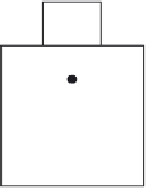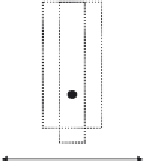Civil Engineering Reference
In-Depth Information
study the behavior of through-deck-welded shear connectors. The headed
stud used in the tests was 13
65 mm and the profiled steel sheeting had
surface area and strength. The major failure modes found in the tests
were concrete pull-out failure and local concrete crushing around the foot
of the stud.
2.6.6 Main Investigations on Shear Connection in Composite
Beams with Prestressed Hollow Core Concrete Slabs
strength of headed studs in solid prestressed concrete planks. The prestressed
planks were used as permanent shutters for the
in situ
concrete. The planks
had a depth of 65 mm and a bearing width of 50 mm on the steel beam
flange. A 533 mm depth by 210 mm width by 92 kg steel beam was used
with two studs welded on each flange. The diameter of the headed stud
used was 19 mm, and different lengths ranging from 95 to 120 mm were
used. The rest of the 150 mm depth of the slab was made with
in situ
con-
crete.
Figure 2.21
shows the details of Moy and Tayler [
2.60
]
push-off test
specimen. A typical load-slip curve of the 19 mm stud was obtained, and the
P
300
150
300
600
150
50
50
150
533
150
450
Steel beam section:
533
210
92 kg UB
Cast
in situ
concrete
Preca
st concrete plank
65


















































Search WWH ::

Custom Search